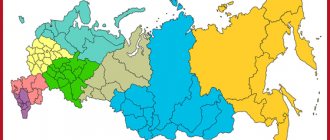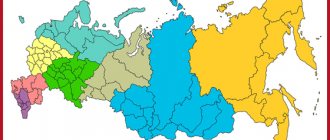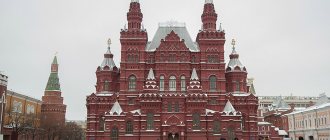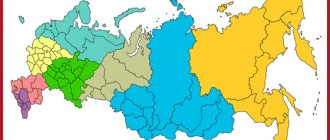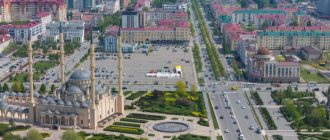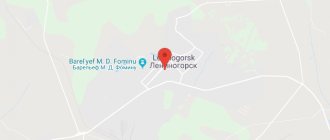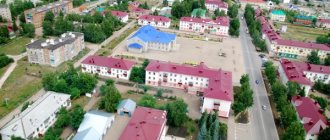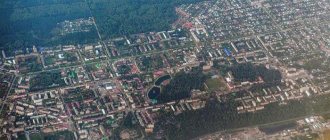What holiday is it today?
09 February 2022, Wednesday
Today are holidays and events: Aeroflot's birthday International Dentist Day Memorable date in Russian military history: The feat of the cruiser Varyag Tomorrow: Diplomat's Day
Today is an Orthodox holiday: Transfer of the relics of St. John Chrysostom, Archbishop of Constantinople... Tomorrow: St. Ephraim the Syrian. Venerable Ephraim of Novotorzhsky. Venerable Ephraim of Pechersk, Bishop of Pereyaslavl. Venerable Theodosius of Totem, the head and founder of the Spasosumorin monastery...
Today is a national holiday: Chrysostom's Fire... Tomorrow: Ephraim's Day...
Seasons
Seasons, four periods of the year (spring, summer, autumn and winter) characterized by certain average temperatures. The period during which the Sun passes through one of these sectors is called the season. Spring in the Northern Hemisphere and autumn in the Southern Hemisphere begin when the Sun passes through the initial circle of declination and its right ascension is 0° (vernal equinox). Summer in the Northern Hemisphere and winter in the Southern Hemisphere occur when the sun's right ascension is 90° (summer solstice). Autumn in the Northern Hemisphere and spring in the Southern Hemisphere begin when the sun's right ascension is 180° (autumnal equinox). The beginning of winter in the Northern Hemisphere and summer in the Southern Hemisphere is considered to be the winter solstice, when the direct ascension of the Sun is 270°... Next: Seasons. Russian folk calendar. Monthly words...
Folk calendar about every day
Every day one season always replaces another and this determines a person’s way of life. In connection with this, a folk calendar was formed in which there were practically no nameless, unmarked days. Every day was special, had its own purpose. All this was determined by climate conditions and astrological phenomena.
A calendar is a system for counting periods of time. The first calendars arose a long time ago, in ancient times, because there was a need to measure time. The word calendar comes from the Latin words caleo - to proclaim and calendarium - debt book. This is due to the fact that in Ancient Rome the beginning of each month was especially proclaimed, and because it was customary to pay debts on the first day of the month. Different peoples counted time differently. Some calendars are based on the changing phases of the moon - lunar calendars; in others - the change of seasons - sunny; in others, the length of the year was coordinated with the change of seasons, and the counting of months was associated with the phases of the Moon. Such calendars are called lunisolar.
In Rus', the calendar was called a monthly calendar. Every day, the month book covered the entire year of peasant life, “describing” day by day, month after month, where each day had its own holidays or weekdays, customs and superstitions, traditions and rituals, natural signs and phenomena. The cyclical nature of the calendar is reminiscent of human life, where spring is youth, summer is heyday, autumn is the time of harvesting fruits (it’s good if there are some, otherwise you can live your life without collecting fruits), winter is the time of wisdom and peace. This cyclicality and rhythm determined the way of life of the farmer. The folk calendar was an agricultural calendar, which was reflected in the names of the months, folk signs, rituals and customs. Even the determination of the timing and duration of the seasons is associated with real climatic conditions. Hence the discrepancy between the names of the months in different areas... Next: Folk calendar...
Dynamics
If we consider the dynamics of the population of the republic, here is how these figures have changed over the past almost 100 years:
- In 1926 – 2,594,032 people.
- In 1933 – 2,784,000 people.
- In 1959 – 2.850.000.
- In 1970 – 3.131.000.
- In 1987 – 3.568.000.
- In 1990 – 3.653.000.
- In 2000 – 3.789.688.
- In 2010 – 3.786.488.
- For 2022 This figure for the population reached 3,902,642 people.
- In 2022 there is a noticeable decrease – 3,894,507.
Fishing calendar for every day
The fishing calendar should not be taken as an absolutely indisputable truth. Fish biting is greatly influenced by a whole range of natural factors, as well as the influence on the nature of man himself. You must not forget that the fish’s bite depends and is determined not only by the calendar dates and biological cycles of their life, reflected in the calendar, but also, no less, by the state of their habitat; the bite also depends on weather conditions: air and water temperatures, cloudiness, wind direction and strength, etc... Next: Fishing calendar...
Geography of the Republic of Tatarstan
The Lower Kama National Park and the Volzhsko-Kama Nature Reserve are located on the territory of Tatarstan. The Volzhsko-Kama Nature Reserve is located in the Kama region, on the left bank terraces of the Volga, on the territory of the Zelenodolsk and Laishevsky districts of the Republic of Tatarstan. Two separate sections of the reserve - Saralovsky (4170 hectares) and Raifsky (5921 hectares) are 100 km apart from each other.
The Lower Kama National Park is located on the territory of two administrative districts of the Republic of Tatarstan: Yelabuga and Tukaevsky. Several land and water tourist routes through forests are planned within the park, as well as water routes along the water area of the reservoir, along the Kama and Kriusha rivers.
Orthodox calendar about every day
Orthodox calendar: Orthodox, Church and Christian holidays.
The church year is an alternation of weekdays and holidays. On weekdays, a person is called to work “by the sweat of his brow to earn his bread.” Holidays are given in order to feel liberation, to rise above the bustle and routine of the world, to feel involved in the highest of worlds, “where there are no illnesses, sorrows and sighs, but endless life.” Since ancient times, holiday cycles have been associated with the seasons. The pagans associated them with the worship of the forces of nature, the cult of which in the Old Testament was replaced by gratitude to the Creator for the universe. And although the connection between holidays and the seasons has not completely lost its power, since God is present in everything, in the plant and animal world, in human works, it nevertheless faded into the background, giving way to a spiritual foundation built on the Sacred Scriptures. The history of Orthodox holidays dates back to the times of the Old Testament. Each of the Orthodox holidays is dedicated to the remembrance of the most important events in the life of Jesus Christ and the Mother of God, as well as the memory of saints... Next: Orthodox calendar...
Minerals
Nature has taken care to hide deposits of mineral and fuel raw materials deep underground. Oil is the most basic and valuable resource. There are more than 130 known deposits, possible deposits - about 3 thousand. The main deposits are Bavlinskoye, Romashkinskoye, Novoelkhovskoye. At these 3 sites, the oil produced is estimated at 800 million tons. According to forecasts, production from all fields is 1 billion tons.
Tataria is rich in unlimited reserves of raw materials, which are widely used for the manufacture of building materials. Success in the economic development of the republic directly depends on production.
Minerals of Tatarstan:
- oil, coal;
- oil shale;
- bitumen;
- copper;
- peat;
- phosphorites.
Raw materials mined in the region increase the authority of Tatarstan as a state. And provided that the riches and attractions of the region are treated with care, many more generations will admire the beauty of the region.
Russian folk calendar for every day
The word “sign” comes from the word “notice”, i.e. observe. As a result of observing what happens around a person every day, he accumulates life experience. This knowledge was passed down from generation to generation, carefully preserved and people trusted it as a sacred book. Many signs have come to us from the depths of centuries without losing their knowledge. Each of us is free to choose: to dismiss all this as an absurd superstition or to take a closer look at the signs and take the centuries-old experience of generations more seriously. Most of us, when taking exams, ask them to scold them, boasting about some kind of good fortune or luck, spit so as not to jinx them or knock on wood, take a detour if a black cat crossed the road, are afraid of the number 13 and much more. And who among us does not have lucky things, numbers? Who has never resorted to the help of fate at least once in their life, who has not believed in secrets? It’s as if everything connected with signs is hidden somewhere deep in our subconscious. Often we remember them mechanically, unconsciously, or just as a joke. But, undoubtedly, the signs contain a lot of accurate knowledge and practical wisdom of our ancestors. They cover all the characteristic, often difficult to perceive, natural phenomena. Signs have preserved a lot of what was in old folk holidays and customs; they help predict the weather, grow crops... Next: Folk signs...
Distinctive features and history of the Republic of Tatarstan
In general, Tatarstan is an agricultural republic.
So, as long as there is oil, we can afford it. Folk humor The first settlements on the territory of modern Tatarstan appeared in the 8th century BC. e. Later, there was a medieval state of the Volga Bulgars here, which was subsequently conquered by the Mongols. Only at the beginning of the 15th century did the Kazan Khanate free itself from the oppression of the Horde. The new state immediately came under the influence of the growing Moscow kingdom.
The situation with Kazan was similar to recent relations with Ukraine. Moscow regularly interfered in domestic politics and supported people beneficial to itself in the struggle for the khan's throne. In the middle of the 16th century, during the reign of Ivan IV the Terrible, in 1552, Kazan was finally conquered by Moscow. All Russians are well aware of this historical milestone from the film “Ivan Vasilyevich Changes Profession” by Arkady Gaidai: “Kazan was taken, Astrakhan was taken. — Did you take Shpak’s apartment? ... Revel took it, Shpak didn’t take it.”
As part of Russia, Kazan was first called the Kazan kingdom, later it began to be called the Kazan province, the Tatar Autonomous Soviet Socialist Republic, etc.. In February 1992, Tatarstan became a republic within the Russian Federation. Thus, the region received its own constitution and the ability to independently manage its own taxes.
Despite its relative independence, Kazan is very well supported by the federal government. Moscow does not spare any money for Tatarstan. Just look at the Universiade, which ended in a real farce. Russian professional athletes defeated foreign students with a multiple advantage. They mocked their opponents like high school students mocked a kindergarten student. Here it was no longer pride for the country, but shame. It’s like sending a bearded Ossetian with a fake passport to the European Youth Championship in freestyle wrestling. Nevertheless, residents of the Republic, and especially its capital, are very grateful to the organizers of the event. Thanks to the Universiade, the roads in Tatarstan were repaired, and, in general, Kazan was brought as a gift.
Kazan during the Universiade. Photo by lasselanta (https://fotki.yandex.ru/users/mezmerise)
In 2005, a special source of pride appeared in the capital of Tatarstan - the metro. It was opened in honor of the millennium of Kazan. City traffic in the main city of Tatarstan cannot fully load the subway, and every new year brings new losses, but no one will ever give up the subway. This is an infrastructure facility, it has status, it is dust in the eyes. The only sad thing is that money for the metro was allocated, among other things, from the federal budget. Somehow it has become the norm in our country that the federal government supports national republics better than ordinary federal subjects that are not endowed with sovereignty.
Geographical position
Tatarstan is located on the East European Plain, at the confluence of the Kama and the Volga. The total area of the republic is 67836 km2. It stretches from west to east for 460 km, and from north to south - 290. Tatarstan is located in the forest and forest-steppe zones.
Mouth of the Kama. Mount Lobach. Photo by antonio (https://fotki.yandex.ru/users/anton-akulinin/)
Population
The relatively small Tatarstan is home to 3,838,230 people, of which more than 75% are urban residents. The economically active population is 47%, the rest are old people and children. The approximate population density is 56.57 people/km2. In total, there are 115 nationalities in the republic. Of course, most of them are Tatars, their percentage is approximately 54%. In second place are Russians, slightly less than 40%. The remaining 113 nations account for 6% of the total population of Tatarstan.
There are much fewer conflicts on ethnic grounds in Tatarstan than, for example, in the northern Caucasus, but they do occur. The most intolerant are children and youth. Also, interethnic conflicts sometimes arise due to incest. Tatars do not approve of marriages with Russians, and vice versa.
Crime
Now the crime situation in Tatarstan is quite calm. The famous Kazan groups have sunk into oblivion, and their leaders either rest in the cemetery or have become respected people.
Nevertheless, Tatarstan, and especially Kazan, has all the vices of modernity. You may get robbed on the street. Burglars can clean out your apartment. In the alley you can meet a drug addict or drug dealer. Even a go-stop happens. Everything is the same as everywhere else.
True, several years ago there was a maniac operating in the region, who, under the guise of a social worker, killed and robbed elderly women, but such scum, unfortunately, periodically appear in all large regions. This cannot be considered a problem. For visitors, the famous Kazan nepotism is much worse. Tatars, unlike Russians, honor family relationships and support relatives. This is very noticeable in the system of government of the republic, where family clans run everything. Family ties can be traced at all levels of government; senior officials are entirely relatives and fellow countrymen of each other. For example, the richest clan of the republic is the family of the former president of Tatarstan Mintimer Sharipovich Shaimiev. They own the largest holdings in the region, which include many industrial and oil-producing facilities of the republic. Unfortunately, in Tatarstan it is especially noticeable that everything is decided by connections, not abilities and efforts.
Unemployment rate
There are no problems with work in Tatarstan. You can get a good job in Kazan, and in Naberezhnye Chelny (someone should make toilet paper and Kamaz trucks), and in Nizhnekamsk. Despite the fact that the republic is quite rich, people here receive small salaries. On average, a little more than 20 thousand rubles. This amount is enough to live on, but you won’t have much fun.
Kamaz plant
Property value
Real estate in Tatarstan is not cheap (after all, the Universiade was here!). Moreover, both in Kazan and in Naberezhnye Chelny. It is difficult to find an apartment cheaper than 50 thousand rubles per square meter. A good one-room apartment in the capital of Tatarstan will cost 2 million rubles, no less.
Climate
The climate in Tatarstan is averagely lousy. It's cold in winter, not too warm in summer, but you can wear shorts. The warmest month is July (+18…+20 °C), the coldest month is January (−13…−14 °C). The absolute annual temperature range in the republic is 80–90 °C, which has a detrimental effect on local cores. The average annual temperature is approximately 3 °C.
Holiday calendar, dates and events of the year
All state and professional holidays in Russia, including significant World and International holidays, and other equally interesting holidays and events about every day.
The holiday has always kept pace with the history of mankind. Social time can be divided into three types: everyday life (weekdays), weekends and holidays. Everyday life is a series of practices repeated day after day and every day (work). Weekends are regular breaks from the rush of everyday life. It is believed that on weekends a person should restore his strength after working days. Day off, non-working day. A holiday is a day of celebration established in honor or in memory of someone or something. A day or series of days celebrated by the church in memory of a religious event or saint... Next: Calendar...
Fauna of the region
Tataria is located between steppes and forests, so it has become home to many species of mammals and birds.
Forests and steppes are rich in the following animal species:
- marmots, jerboas and chipmunks;
- hares, foxes and wolves;
- martens, hedgehogs and stoats;
- waterfowl otters and minks.
In total there are about 400 species of various invertebrates and mammals and 300 species of birds.
In the region you can often see:
- long-eared owls and eagle owls;
- white partridges;
- larks and swifts;
- wood grouse and black grouse;
- woodpeckers
In addition to peaceful inhabitants, predatory and waterfowl species settled within the region.
Predators:
- black vultures, kites and golden eagles;
- steppe eagles and griffon vultures;
- Yuviks and peregrine falcons;
- hawks and buzzards.
The rich forests and steppes of the region provide excellent habitat for a wide variety of birds. At the same time, there is plenty of nutrition for each type.
Waterfowl representatives:
- goose, duck, swan;
- common tern;
- duck, merganser;
- common black-headed gull.
All these representatives are a true decoration of the nature of the region. One cannot fail to note the richness of the underwater world. The river depths are simply teeming with freshwater inhabitants:
- carp, catfish and pike;
- ides, asps and chubs;
- trout and pike perch.
Closer to the coastal zone you can often find bream, ruffe, perch and roach.
Prayer book, Orthodox prayers for every day
Prayer is the most powerful means for healing all illnesses - both physical and mental. Prayers can be laudatory or grateful, petitionary and repentant. If we have offended God, sinned, we must ask Him for forgiveness, that is, repent. Such prayers are called repentant prayers. If everything is fine with us, if we and our loved ones are healthy and prosperous, if we have a place to live, something to wear, something to eat, we must glorify and thank God for this. Such prayers are called praise or thanksgiving. If some misfortune, illness, trouble or need happens, you need to ask God for help. Such prayers are called petitionary... Next: Orthodox prayers...
Migrations
Due to the fact that the region is economically well developed, it is attractive from the point of view of internal migration. So, one example of 2022 shows what an attractive place this part of Russia occupies for its residents.
During this calendar period, 4,419 people came here as internal migrants. But it is worth noting that there are also those leaving, 31,550 people. Some of them are internally displaced, while others. immigrate outside the country.
But, despite this, Tatarstan still remains quite attractive from the point of view of economic development.
Zodiac, astrological, eastern calendar. Zodiac signs
In ancient times, to establish the calendar, priests used knowledge of the positions of all the planets. Before the reform of Peter 1, the New Year was celebrated on the Day of the Autumn Equinox. On this day, according to ancient legend, the most peaceful treaty was concluded between the Great Race (ancient Slavs) and the Great Dragon (ancient Chinese) and it was approximately 7518 years ago... For the ancient Slavs, the calendar month corresponded to the lunar cycle from new moon to new moon, taking into account such Thus, the relationship of the entire annual cycle with astronomical and natural phenomena. There was no coherent calendar system. The main natural phenomena are still considered to this day to be the days of the solar equinox and solstice - the Slavic holidays Maslenitsa, Kupala, Ovsen and Kolyada. But during the time of Peter 1, all ancient Slavic calendars were abolished and a new Western European calendar from the Nativity of Christ (Julian calendar) was introduced, while the beginning of the calendar was moved to January 1. The Julian calendar (old style) did not take leap days into account and accumulated one extra day every 128 years. After the October Revolution in 1918, the Gregorian calendar (new style) was introduced in Russia, according to which an amendment of 13 days was introduced. The calendar of the ancient Slavs was based on two planets: the Sun and the Moon. And now they don’t use anything at all. The calendar has become static. There is no such thing as the calendar, it turns out, resting on some planet. Nobody even knows about it. There are just some standard numbers, there are months and holidays. The calendar is based on the Sun and Moon. Why is this so? Because these two luminaries influence the Earth. The Earth revolves around the Sun, and the Moon revolves around the Earth. And these two luminaries create the atmosphere on the planet. From here the calendar is built... Next: Astrological calendar...
Relations between Tatarstan and neighboring regions of the Russian Federation
Relations between Tatarstan and the republics of Udmurtia, Mari El, Chuvashia, and Bashkortostan are built on the basis of a treaty of friendship and cooperation. An agreement on cooperation in the trade, economic, scientific, technical and cultural spheres was signed with the Kirov region.
There is an agreement with the Ulyanovsk region on interaction and cooperation in the field of economics, culture, science, high technology, healthcare and small business development. Also, an agreement on the development of water tourism was signed between Tatarstan, Ulyanovsk and Samara regions. An agreement was concluded with the Orenburg region on the construction of an international transport corridor.
So, what regions does Tatarstan border with? With Udmurtia, Mari El, Chuvashia, Bashkortostan and the Kirov, Samara, Ulyanovsk, Orenburg regions. An agreement on interaction and cooperation has been signed with each neighboring entity.
Dream books online, interpretation of dreams
A dream book is nothing more than an interpreter of dreams and dreams, a translator of dreams. Since ancient times, people have been using dream books; dreams have always been given great importance, and people have often noticed the prophetic properties of some dreams. The dream book can become your faithful assistant every day and throughout your life, thanks to the dream interpreter you can always make the right decisions, the dream book will help you resist temptations in time, and will warn you against wrong steps and frivolous actions. Further…
National composition
Considering the national composition of the urban and rural population in a given district, it is worth highlighting the following prevailing nations:
- Tatars – more than 53%.
- Russians – 39%.
- Chuvash – more than 3%.
- Udmurts, Mordovians, Maris, Ukrainians, Bashkirs, Azerbaijanis and some other nationalities are less than 0.6%.
As can be seen from the above list, the main nationalities are Tatars and Russians. The remaining ethnic groups are represented by such insignificant groups that they do not influence the overall formation of the picture.


